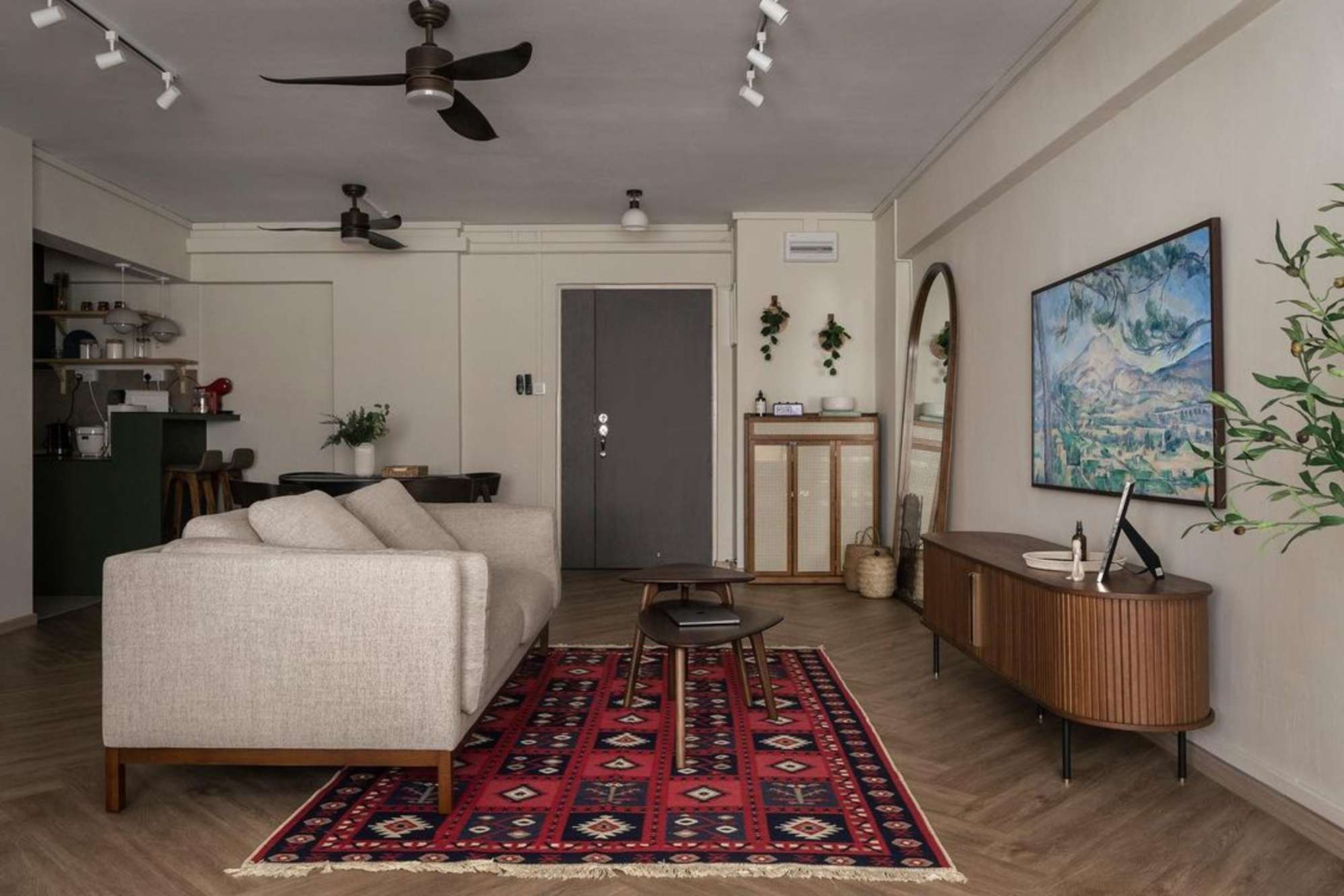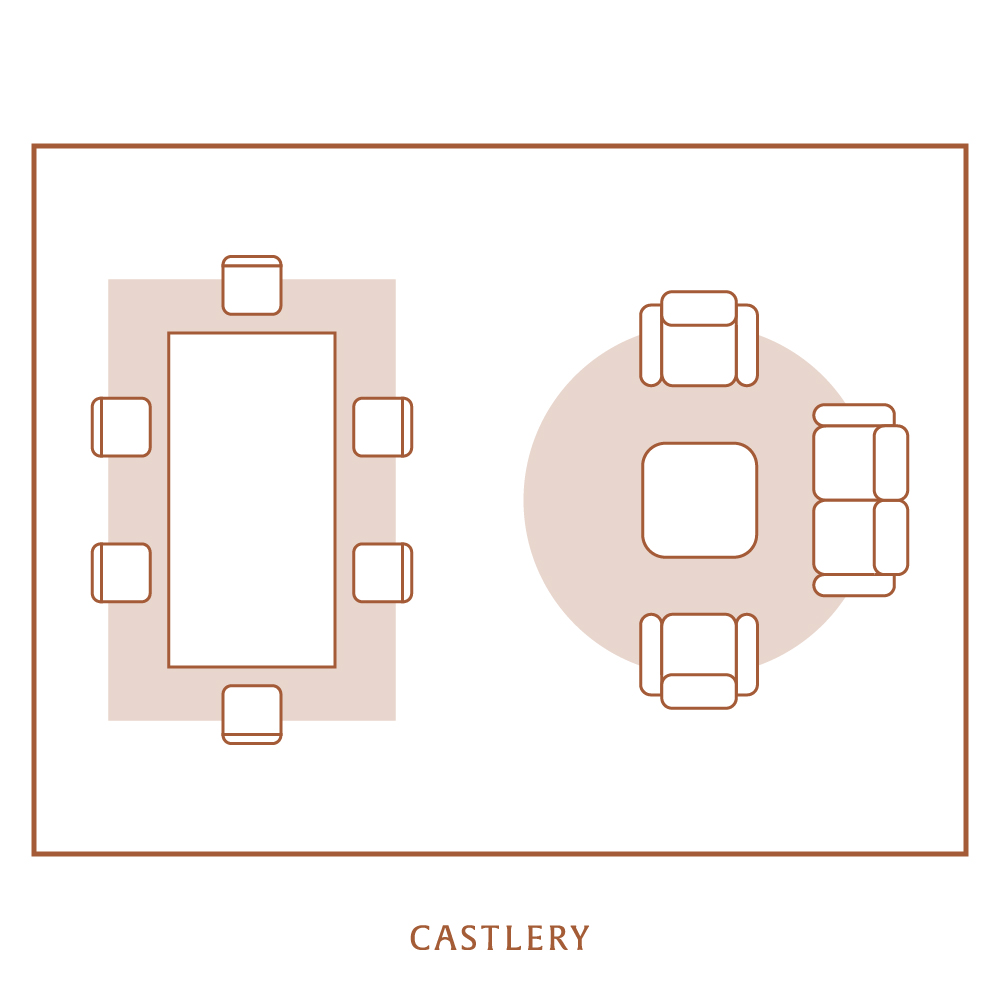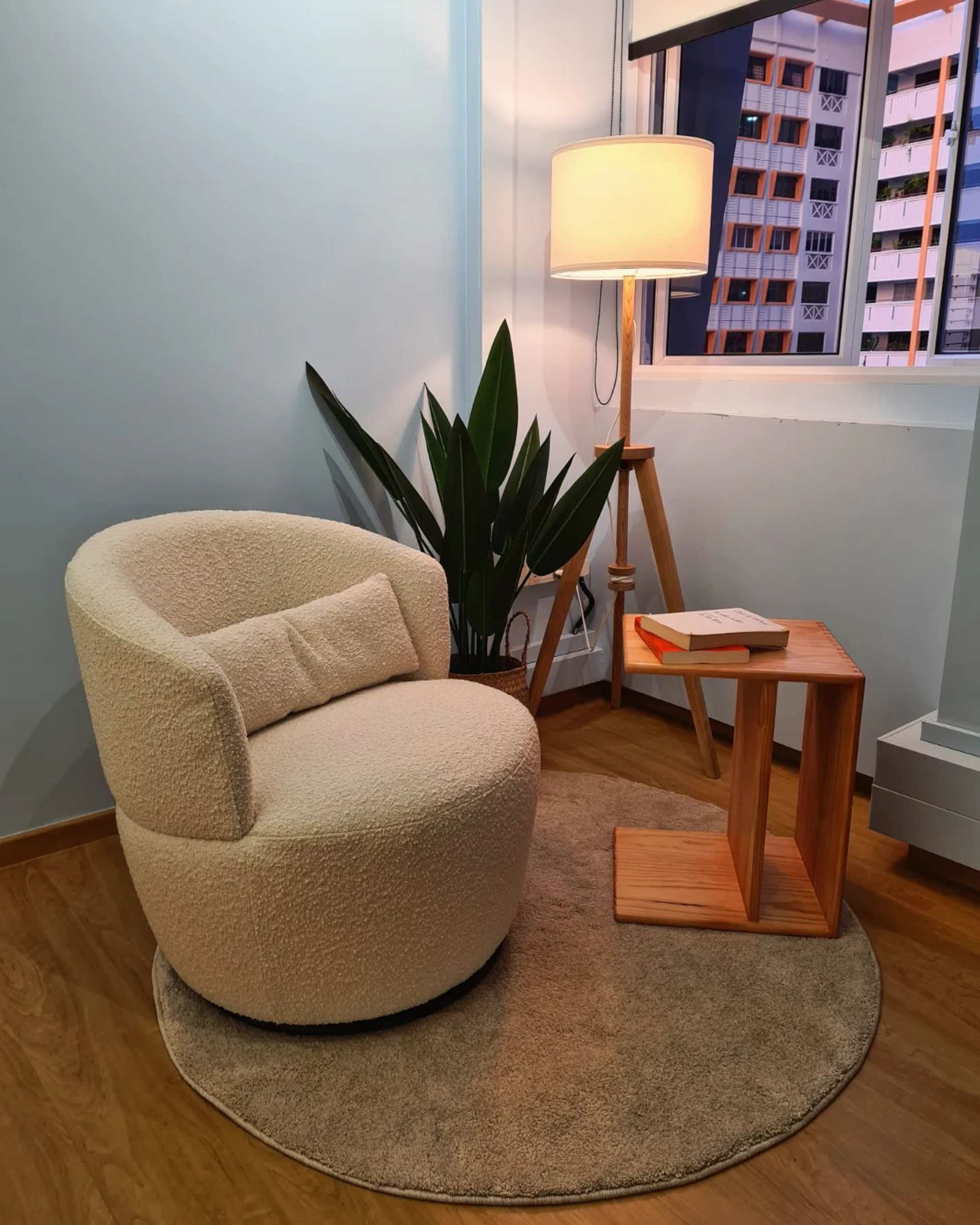
The Ultimate Guide to Living Room Rug Placement
An area rug can truly tie a living room together, adding warmth, defining the space, and complementing your carefully chosen furniture. But with so many sizes, styles, and placement options, it can be tricky to know how to start.
In this guide, we dive deeper into the intricacies of living room rug placement and size, offering detailed insights and tips that go beyond the basics. Whether you're dealing with a sprawling open-plan living room or a cosy nook, we've got you covered.
Understanding rug sizes
Before diving into placement strategies, understanding the various rug sizes available and how they can be used can help you pick the right one. Let’s break it down:
Small Rugs (90 x 150 cm, 120 x 180 cm): Ideal for small spaces, accent areas, or under coffee tables.
Medium Rugs (150 x 240 cm, 180 x 270 cm): Suitable for smaller living rooms or as an accent rug in larger spaces.
Large Rugs (240 x 300 cm, 270 x 360 cm): Perfect for spacious living rooms, covering significant floor areas and accommodating furniture arrangements.
Extra-Large Rugs (300 x 420 cm and larger): Best for combined living and dining areas or exceptionally large rooms.
At Castlery, we carry a wide range of rug sizes from area rugs to runners. Pictured: The Mira Wool Area Rug.


From geometric patterns to sleek designs, choose a rug that fits your home. Pictured: The Atmore Wool Area Rug.
Considering room size and shape
The size and shape of your living room play a key role in determining the ideal rug size and placement. Here are some common room sizes and shapes and the best rugs for them:
Long and narrow rooms
These types of living rooms can often feel cramped or tunnel-like, making it important to consider the size and layout of the rug to improve the proportions of the space.
To create a more balanced and inviting space, consider using a rectangular rug placed lengthwise. A rectangular rug can elongate the space visually, making it appear larger and more inviting. It also creates a unified area that directs the eye along the room's length, enhancing the overall flow.
This placement not only ties the furniture pieces together but also breaks the corridor effect, making the room feel more cohesive and spacious.
Recommended read: 10 Ideas for Decorating a Long, Narrow Living Room

Square rooms
Square rooms present a different set of challenges, as their symmetrical shape can sometimes feel static or boring.
To introduce dynamism, opting for a square or round rug can be very effective. A square rug echoes the room's shape, reinforcing its symmetry, while a round rug can introduce a contrasting element that adds visual interest and breaks up uniformity.

Large open spaces
In large open spaces, you can use multiple rugs in different styles and colours to define different zones within the same room.
This helps in adding layers of visual interest, making the vast area feel more intimate and well-designed. Don’t forget to ensure that your rugs complement each other or it can create visual clutter.

Placement strategies for different layouts
How the rug is placed in your living room can make a huge difference in the overall aesthetics and functionality of the space. Here are some popular area rug placement ideas you can consider:
Centring the rug
A classic approach, centring the rug in the living room, works well with balanced and symmetrical furniture arrangements. This placement creates a focal point, drawing attention to the centre of the room and helping to define the seating area for a cohesive look.
Remember to place the rug so that it aligns with the central furniture piece, typically the coffee table, and ensure that there’s an equal amount of floor space around the rug's edges.
The Mori Living Room Set and Albie Travertine Rectangular Coffee Table centred on a bold striped rug. Picture credits: @kthillier


@mareenah places the Hamilton Round Chaise Sectional Sofa, Cupid Coffee Table, and Amber Bouclé Swivel Chair on a large area rug.
Front legs on
When placing a rug under furniture, a general rule of thumb is to have the front legs of the larger pieces pieces, such as contemporary sofas and modern armchairs, fully on the rug. This placement helps to anchor the furniture while still allowing the rug to define the space, creating a balanced look without requiring an overly large rug.
Position the rug so that it extends under the front legs of your sofa and chairs. The back legs should rest on the bare floor, creating a harmonious blend of textures.
With a square rug centred in the living room, @ahoneohome places the front legs of the Marlow Performance Bouclé Curved Sofa and armchairs on the rug.


@dr.emzieees arranges the Dawson L-shape Sectional Sofa over a rug, with the back of the sofa off the rug.
All furniture on
For a cohesive and luxurious look, place all furniture entirely on the rug. This method is particularly effective in open-plan spaces as it unifies the room, making it feel larger and more connected.
By fully placing furniture on the rug, you also create a more grounded and cohesive look, perfect for intimate gatherings.
Choose a large rug that extends beyond the outer edges of your seating arrangement. Ensure all furniture legs are on the rug, ideally with at least 30 to 45 cm of rug visible around the furniture.
With all furniture on the area rug, @zephyr_and_stone delineates the space in the living room. Also pictured: The Jonathan Sofa, Vincent Coffee Table in Oak, and Mika Side Table.


@thepastelabode creates a small reading island with the Amber Bouclé Swivel Chair and a side table on a circular rug.
Enhancing aesthetics with rugs
Beyond size and placement, a rug's colour, pattern, and texture can also impact your living room's aesthetic. Here’s how they do just that:
Colours
Rugs are great for introducing colour to your space that can dramatically impact your living room’s ambiance and cohesion.
However, the colour of your rug should ideally complement your existing decor to create a harmonious look. For instance, if your room's palette is more subdued, a brightly coloured rug can introduce a lively pop of colour that enlivens the space.
On the flip side, if your room is filled with vibrant and colourful furniture, a neutral-coloured rug can provide a calming backdrop that balances the visual energy.
Patterns
If your living room is looking a little too bland, a patterned rug is a great way to add character to the space.
Bold patterns can become the focal point of the room, drawing attention and adding a dynamic element to your decor. They're particularly effective in modern or eclectic spaces where visual interest and individuality are key.
Subtle patterns, on the other hand, offer elegance and sophistication. They can enhance the room’s design without overwhelming other elements. These patterns work well in traditional or minimalist settings where the focus is on simplicity and understated beauty.
Texture
Texture is an often-overlooked aspect of rug selection that can significantly enhance the depth and dimension of a room.
For example, pair a plush wool rug with sleek leather furniture introduces a contrast that enhances the tactile appeal of the space. The softness of the wool rug invites touch and adds warmth, while the smooth, cool leather provides a sleek, modern counterpoint.
Other texture combinations might include a sisal or jute rug with upholstered furniture, adding a natural, earthy element to a room. The rough, organic texture of the natural fibres contrasts beautifully with the smooth, soft fabric of the upholstery, creating a balanced and visually interesting space.
@briebenfell incorporates different textures into the living room with the Odette Performance Bouclé Sofa, Paloma Bouclé Armchair, Yara Jute Area Rug, and a wooden coffee table.


@underratedxstudio introduces a pop of colour with a bright rug. Pictured: The Owen Sofa and Harper TV Console.
Choosing the right rug: Size and placement guide
Here's a handy table that summarises the different rug sizes and placement tips for different living room scenarios:
| Rug size | Dimensions | Ideal for | Placement tips |
|---|---|---|---|
| Small | 3 x 5, 4 x 6 feet | Small spaces, accent areas, under coffee tables | Center the rug under the furniture or use it to define a small area. |
| Medium | 5 x 8, 6 x 9 feet | Smaller living rooms, under dining tables for 4-6 people | Partially under furniture or in an open area to define a zone. |
| Large | 8 x 10, 9 x 12 feet | Spacious living rooms, accommodating furniture arrangements, under dining tables for 8+ people | All furniture legs on the rug or front legs only for a more defined look. |
| Extra-large | 10 x 14 feet and larger | Combined living and dining areas, exceptionally large rooms | In a very large living room, position the rug so that it defines the main conversational area, with all the furniture legs resting on it. Leave a border of flooring visible around the edges to create a sense of spaciousness and balance. |
Rugs can enhance your living room’s design
Selecting the right rug size and placement for your living room is a critical step in achieving a well-balanced and inviting space. By understanding the different rug sizes and exploring different placements, you can find the perfect fit for your space. Whether you have a cosy nook or a spacious open floor plan, rugs contribute to the room’s design and overall functionality.
Frequently asked questions about living room rug placement
Should area rugs in one living room be all the same?
While it’s not necessary for all area rugs in one living room to be the same, they should complement each other in terms of style, colour, and pattern. Consider the overall design scheme of the room as well as the placement of the rugs to choose one that enhances the visual appeal without clashing or creating a sense of disharmony.
Should a rug go wall to wall?
Whether a rug should go wall-to-wall depends on the size and layout of your living room, as well as your personal preference. In smaller rooms, a wall-to-wall rug can make the space feel cramped, while in larger rooms, it can create a sense of grandeur and luxury. Think about the overall aesthetic you want to achieve and the functionality of the space before deciding on a wall-to-wall rug.
Should the rug be darker or lighter than the sofa?
It's all about creating a dynamic and balanced look. Placing a light rug under a dark sofa can beautifully brighten a room, making the space feel more open and airy. A dark rug, on the other hand, can add depth and warmth to a room with a light sofa, grounding the space and creating a cosy atmosphere.
The key is to have some contrast between the rug and the sofa to avoid a flat or monotonous look. Consider the overall colour scheme of your living room and choose a rug that complements the existing décor while adding visual interest.

